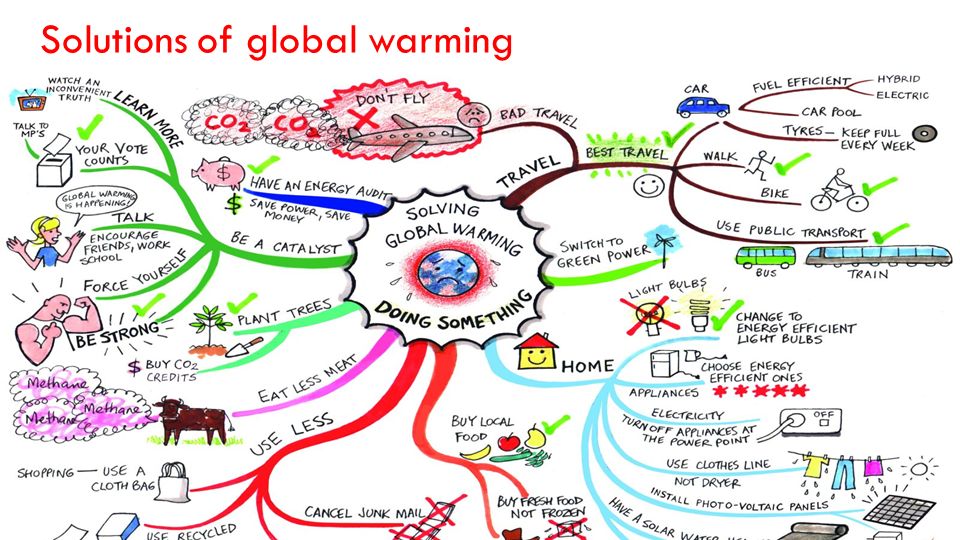Some Solutions to Global Warming
““Our house is still on fire. Your inaction is fueling the flames by the hour””
Simply Put:
We need to reduce greenhouse gas emissions that are responsible for climate change. By choosing cleaner ways to power our homes, offices, machines, and transportation systems, and being more efficient and less wasteful, we can produce fewer greenhouse gas emissions.
This might sound difficult, but if we all work together, many people can lessen the impacts from global climate change. Everyone can play a part in a clean energy future, including government, businesses, and you.
BUT we also need to be realistic and prepare for life in an ever changing climate. We need to make sure our homes, businesses, buildings, roads and infrastructure and all the services we use can withstand extreme climate changes, which we will not be able to avoid in the near future.
It’s about limiting and reducing our carbon, methane, and Greenhouse Gas Output & usage, while at the same time increasing and enhancing renewable and sustainable resources; and IDENTIFYING actions to prepare for a changing climate to natural systems, health care, infrastructure, local economies, food systems and caring for people who lost their home and caring for a loved one from a natural disaster.
For a detailed list of ways that people, towns, communities, cities, states, countries, and businesses (both large and small) can turn around the effects of global warming, please read Drawdown: The most comprehensive plan ever proposed to reverse global warming, edited by Paul Hawken and published by Penguin Books, 2017.
It includes the 100 most substantive solutions to reverse global warming, based on meticulous research by leading scientists and policymakers around the world.
Don’t have time to read a book? According to the the Union of Concerned Scientists, here are the top 12 things you can do as an individual to help limit global warming:
Source: Union of Concerned Scientists
The car you drive: the most important personal climate decision. When you buy your next car, look for the one with the best fuel economy in its class. Each gallon of gas you use is responsible for 25 pounds of heat-trapping gases in the atmosphere. Better gas mileage not only reduces global warming, but will also save you thousands of dollars at the pump over the life of the vehicle. Upgrading from a 20 mpg car to a 40 mpg car can save you 4,500 gallons of gasoline over the car’s life span. At today’s gas prices, that’s a total savings of more than $18,000.
Make your house more air tight - Even in reasonably tight homes, air leaks may account for 15 to 25 percent of the heat our furnaces generate in winter or that our homes gain in summer. If you pay $1,100 a year to heat and cool your home, you might be wasting as much as $275 annually. Take advantage of the free home energy audits offered by many utilities, which can help you identify (and reduce) the most significant air leaks.
Buy and use a programmable thermostat. This can reduce your heating and cooling emissions by 15 percent and save you $180 a year. During the summer, a setting of 78 degrees Fahrenheit is optimal during the hours you are at home, and 85 degrees when you are away during the day.
Eat less meat, especially from domestic or farm-raised animals. Food accounts for a sizable portion of our emissions. If you want to make cuts here, your best option is to reduce your consumption of meat, especially beef. That’s because a pound of beef is responsible for some 18 times the emissions of a pound of pasta. An average family of four that decides to cut their meat intake in half could avoid roughly three tons of emissions annually. Learn more about the effects of your meat choices.
Use power strips in your home office and home entertainment center. These will curb “phantom loads” and save a surprising amount on your electric bill. Keeping your laser printer turned on when not in use could be costing you as much as $130 annually. Learn more about power strips and other smart tools for saving energy.
Upgrade your refrigerator and air conditioner, especially if they are more than 20 years old. New ones are twice as efficient or more. For fridges - if they’re old, an upgrade can pay for itself in as little as three years in energy savings alone. Look for the Energy Star label when you shop for a new fridge or any other appliance, especially freezers, furnaces, air conditioners, and water heaters, which use the most energy. These items may cost a bit more initially, but the energy savings will pay back the extra investment within a couple of years.
Get an electricity monitor. Identify where the energy hogs are in your home, which can help you save hundreds of dollars annually. Electricity monitors can be found at most hardware store or you may even be able to borrow one from your local library.
Change those light bulbs. New LED light bulbs can give the same light for 15 percent the electricity. That adds up to more than $100 in savings for most families each year.
Wash clothes in cold water. They get just as clean with today’s detergents. But hot water washes use five times the energy—and create five times the emissions. This could save you nearly $100 a year.
Buy less stuff and only buy what you really need and will use. Reduce, re-use, and recycle—it’s not just about pollution, but the strategy will lower your emissions and help combat global warming.
Let policy makers know you are concerned about global warming. Our elected officials and business leaders need to hear from as many concerned citizens as possible.
Spread the word. If all Americans reduced their emissions by 20 percent we could shutter 200 of the nation’s 600 coal plants, a great step in fighting the worst consequences of climate change.




